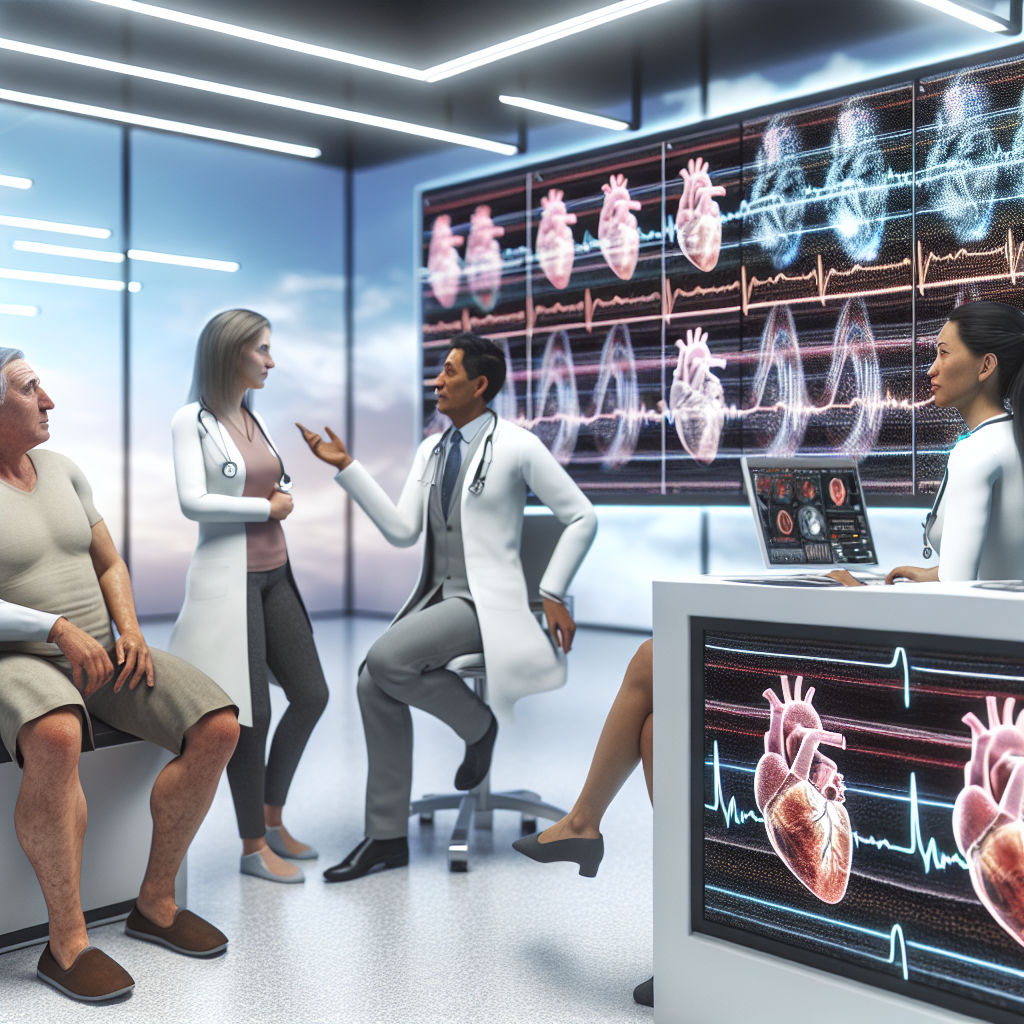AI Technology in Healthcare: Enhancing Heart Disease Diagnosis
Heart disease remains a leading cause of death globally, imposing significant burdens on healthcare systems and economies. The World Health Organization reports that approximately 17.9 million people die from cardiovascular diseases each year, representing 31% of global deaths. With such staggering statistics, the necessity for prompt and accurate diagnosis can’t be understated. Fortunately, Artificial Intelligence (AI) is emerging as a transformative force in healthcare, particularly in diagnosing heart disease.
Current Challenges in Heart Disease Diagnosis
Despite technological advancements, heart disease diagnosis faces challenges such as high misdiagnosis rates and false results. Traditional diagnostic methods like electrocardiograms (ECG) and echocardiograms, while valuable, are not infallible. They often require subjective interpretation, leading to inconsistencies and potential inaccuracies.
Further complicating the picture is the massive amount of data generated from patient monitoring. Sifting through this data effectively is beyond typical human capacity and requires enhanced analysis capabilities to improve outcomes. This is where AI offers significant promise.
AI Implementation in Heart Disease Diagnosis
AI’s integration into healthcare diagnostics is revolutionizing how medical data is analyzed and interpreted. With the advent of electronic health records (EHR), AI systems can analyze vast amounts of information, including patient histories, to uncover patterns that might not be immediately evident to human clinicians.
AI algorithms are proving instrumental in risk assessment and patient stratification, helping identify high-risk individuals based on complex data. Such capabilities facilitate more targeted interventions, potentially preventing severe cardiac events before they occur.
Specific AI Technologies Being Used
AI technologies such as machine learning models are particularly adept at recognizing patterns within imaging data, a critical aspect in diagnosing heart conditions. Natural language processing (NLP), another branch of AI, excels in parsing clinical notes to identify critical insights that otherwise might be overlooked.
Additionally, wearable devices equipped with AI algorithms provide continuous monitoring, offering real-time data on heart health metrics like heart rate and rhythm. These devices alert healthcare professionals to abnormalities, enabling timely intervention.
Sample Code for AI Model in Heart Disease Diagnosis
The following Python code illustrates how AI models can be employed to predict heart disease using a dataset. The code utilizes the scikit-learn library to process data and train models with both a Decision Tree and a Neural Network.
# Import necessary libraries
import numpy as np
import pandas as pd
from sklearn.model_selection import train_test_split
from sklearn.preprocessing import StandardScaler
from sklearn.tree import DecisionTreeClassifier
from sklearn.neural_network import MLPClassifier
from sklearn.metrics import accuracy_score, confusion_matrix, classification_report
# Load the dataset
url = "https://archive.ics.uci.edu/ml/machine-learning-databases/heart-disease/processed.cleveland.data"
column_names = ['age', 'sex', 'cp', 'trestbps', 'chol', 'fbs', 'restecg',
'thalach', 'exang', 'oldpeak', 'slope', 'ca', 'thal', 'target']
df = pd.read_csv(url, names=column_names, na_values='?').dropna()
# Data preprocessing
df['target'] = df['target'].apply(lambda x: 0 if x == 0 else 1)
X = df.drop('target', axis=1)
y = df['target']
X_train, X_test, y_train, y_test = train_test_split(X, y, test_size=0.2, random_state=42)
# Scale features
scaler = StandardScaler().fit(X_train)
X_train_scaled = scaler.transform(X_train)
X_test_scaled = scaler.transform(X_test)
# Train models
dt_model = DecisionTreeClassifier(max_depth=5, random_state=42).fit(X_train_scaled, y_train)
nn_model = MLPClassifier(hidden_layer_sizes=(10, 5), max_iter=1000, random_state=42).fit(X_train_scaled, y_train)
# Evaluate models
for model, name in zip([dt_model, nn_model], ["Decision Tree", "Neural Network"]):
y_pred = model.predict(X_test_scaled)
print(f"{name} Accuracy: {accuracy_score(y_test, y_pred):.4f}")
print(classification_report(y_test, y_pred))
This script demonstrates classic supervised learning techniques and evaluates model performance using metrics like accuracy, confusion matrix, and classification report.
Real-World Examples
Many healthcare organizations are already leveraging AI. For example, AI’s role in detecting arrhythmias is advancing cardiology. In one notable application, AI analyzed ECG data at a scale and speed impossible for human clinicians, improving diagnostic accuracy and patient outcomes.
Another collaboration involves AI-assisted imaging studies, where machine learning enhanced the visibility of subtle details within cardiac imagery, leading to better diagnosis and treatment planning.
These technologies are not developed in isolation; partnerships between tech companies and medical institutions are driving innovations, such as the HeartFlow Plaque Analysis tool, used for detailed coronary artery assessments.
Benefits and Limitations of AI in Heart Disease Diagnosis
AI brings numerous benefits: increased diagnostic accuracy, efficiency in data analysis, and the potential for early disease detection. These advantages support personalized treatment plans and improved patient care.
However, AI is not without its challenges. Data privacy remains a critical concern, as does algorithm bias, which might lead to skewed results. Human oversight remains essential to contextualize AI predictions and make informed decisions.
To address these challenges, robust regulatory frameworks are required to ensure AI applications align with ethical standards and patient safety.
Conclusion: The Future of AI in Healthcare
The horizon for AI in healthcare promises even greater advancements. As technology evolves, so too will its capabilities in diagnosing and managing heart disease. Collaboration between technology and healthcare sectors is vital, ensuring these tools are effectively integrated into existing systems.
Ongoing research and development are crucial to realizing AI’s full potential in patient care. By continuing to bridge the gap between AI innovations and medical practices, the healthcare industry can offer superior solutions to complex health challenges.





